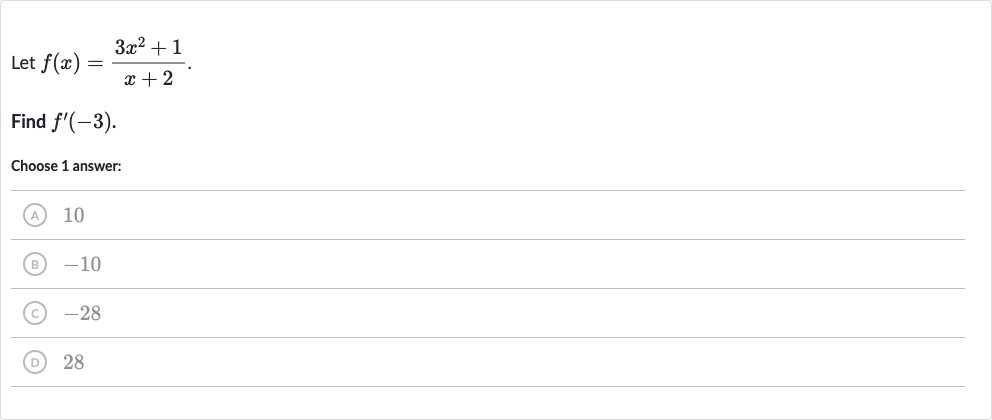AI tutor
Full solution
Q. Let .Find .Choose answer:(A) (B) (C) (D)
- Apply Quotient Rule: To find the derivative of the function , we will use the quotient rule. The quotient rule states that if we have a function that is the quotient of two functions, , then its derivative is given by . Here, and .
- Find : First, we need to find the derivative of . The derivative of is , and the derivative of a constant is . Therefore, .
- Find : Next, we need to find the derivative of . The derivative of is , and the derivative of a constant is . Therefore, .
- Apply Quotient Rule: Now we apply the quotient rule. The derivative of , denoted as , is given by:
- Simplify : We simplify the expression for :.
- Combine Like Terms: Further simplifying, we combine like terms in the numerator: .
- Evaluate at : Now we need to evaluate at . We substitute into the derivative:
- Calculate Numerator and Denominator: We calculate the numerator and the denominator separately:Numerator: .Denominator: .
- Divide Numerator by Denominator: Now we divide the numerator by the denominator: .

